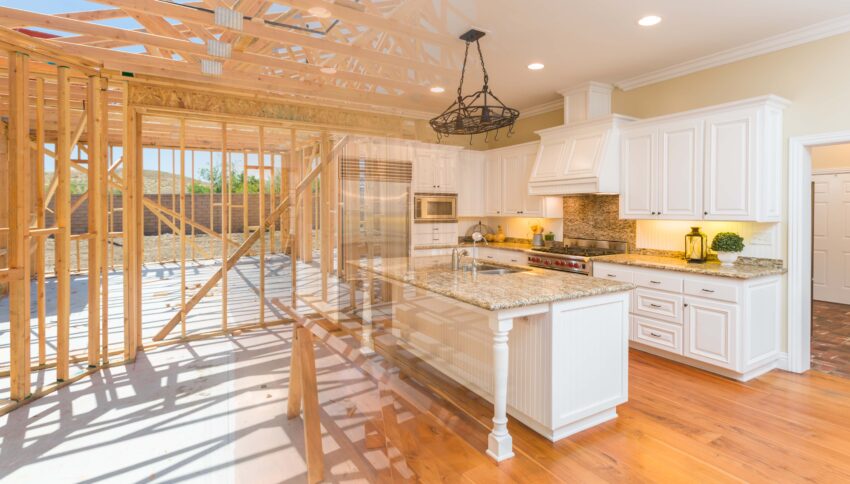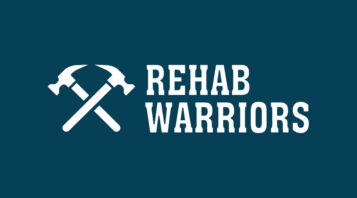
Updated May 22, 2023
Hoping to renovate your house but don’t have the funds or the credit score to get a loan? Keep reading to discover your options for bad credit home repair loans.
Your home is your most significant investment—and repairs, maintenance, and renovations are an inevitable part of maintaining that asset. Renovating your home can help increase its value and improve your quality of life, too—but it can also be quite costly.
A potential solution is a home renovation loan, which alleviates monetary limitations for those who don’t have the cash on hand for an expensive project. However, one of the first things an online lender or any type of lender will look at for home improvement financing is your credit score.
If you don’t have good credit, we have you covered. Read on to learn more about how to navigate home improvement loans with bad credit, as well as some of the alternative options available to you.
The Challenge of Getting a Home Improvement Loan With Bad Credit
A bad credit score is typically considered to be below 670 on a scale of 300-850.
At least 42% of Americans have a credit score below 700, which means nearly half of the country may be labeled a “subprime borrower” by lenders, meaning they’re unlikely to repay loans due to bad credit and poor payment or credit history. As such, those with bad credit may have a difficult time obtaining loans.
For those who fall in the 42%, do not lose hope of financing a home repair or renovation—you can still consider a home improvement loan as a financing solution. But first, you must consider whether it’s the right solution for you and your specific financial situation.
What is a Home Improvement Loan?
A home improvement loan is a type of unsecured personal loan that typically must be paid back over a period of three to five years. Luckily, unlike a secured loan like a mortgage or reverse mortgage loan, home improvement loans do not require collateral, meaning you won’t have to put your home at risk when obtaining the loan.
If you’ve experienced working with the Federal Housing Administration trying to secure an FHA loan with bad credit , this process may be somewhat familiar to you. Home improvement loans for bad credit can be as little as $1,000 or as much as $50,000 depending on your ability to repay, which is determined by a lender after viewing your payment or credit history. The monthly payment will remain consistent over the payment period, assuming you do not encounter additional fees or penalties.
Unsecured loans can be a great way to manage the large cost of a home improvement project, but they do require borrowers to meet certain standards when they pull your credit report, including your credit score.
What Credit Score is Needed for a Home Improvement Loan?
When considering how to get the best home improvement loan with poor credit, remember that major lenders typically give preference to borrowers with less risk, meaning those with high or excellent credit scores who have a consistent and proven record of paying back loans, whether it’s a mortgage loan or a credit card statement. Credit risk can also be assessed through income, education, and the unsecured loan term or conditions.
It’s much easier for borrowers to secure a loan approval if they have a credit score of 700 or higher. However, some lenders will provide loans to individuals with a credit score as low as 580. These lenders specifically appeal to those with a fair or poor credit score, although these types of loans may have more limitations.
Can You Get a Home Improvement Loan With a 500 Credit Score?
The vast majority of private lenders will not provide a private loan to borrowers with a credit score of 500.
However, there might still be another loan option for those in this situation: Instead of asking how to get a renovation loan with bad credit, think about how you could convert your existing home equity into cash for additional funding for your home improvement projects.
Alternatives to Home Improvement Loans
If you have bad credit and are unable to acquire a home improvement loan, you can explore another financing option where you might secure a loan approval, including:
- Home equity loans – These types of loans allow homeowners to borrow a lump sum against the equity of their home. Borrowers will acquire fixed loan amounts, which must be paid with an equal monthly payment over a fixed repayment term or loan term. You’ll need a credit score of at least 620 to qualify for a home equity loan for remodel, though it may differ depending on the home loan lender.
- Home equity line of credit – Like a home equity loan, a line of credit allows a borrower to borrow against the equity of their home. However, unlike a home equity loan, borrowers will not receive a lump sum payment. Instead, borrowers can take out money against a credit limit and must make the repayments before taking out more. Most lenders with a HELOC loan offer require a credit score of 680 or more to qualify. If you are also seeking a HELOC with bad credit, a HECM might be a better option for you.
- Reverse mortgage – A reverse mortgage loan is only accessible to borrowers who are 62 or older. Essentially, senior homeowners can convert their home equity into cash income without the need to make loan payments. A minimum credit score is not required to qualify for a reverse mortgage, but it’s important to understand the pros and cons of reverse mortgages for retirement before choosing this option.
- Cash-out refinance: This is a type of mortgage refinancing where you take out a new mortgage for more than you owe on your current mortgage and receive the difference in cash. A cash-out refinance effectively allows you to tap into your home equity and turn it into cash that can be used for home improvements, debt consolidation, or other financial needs. This can be a good option for homeowners with less than perfect credit, as the loan is secured by your home. However, it’s important to have enough equity in your home to qualify, and you should be aware that this option can potentially increase the amount of interest you pay over the life of the mortgage if you extend the term.
- Sale-leaseback: If you’re looking for a unique financing option that eliminates the hassle of getting secured loans for home improvement with poor credit, look no further. In a sale-leaseback arrangement, a homeowner sells their home to a company that leases it back to you in one transaction. The sale allows you to convert your home equity into cash while the lease allows you to remain in your home.
The Smart Way to Fund Your Home Improvement Projects
Acquiring a home improvement loan with bad credit can be difficult, although not impossible. If you find the correct lender, you and your home can both be the picture of abundance. However, there are also many alternative solutions to fund your home improvement project.
If you have bad credit, one of the easiest alternatives to a home improvement loan is a sale-leaseback solution.
You sell your house. You get the money you need. Utilize a sale-leaseback for debt consolidation, avoid the hassle of moving, and pay off overdue credit card bills to work your way toward a better credit score.
Key Takeaways
Hoping to renovate your house but don’t have the funds or the credit score to get a loan? A potential solution is a home renovation loan, which alleviates monetary limitations for those who don’t have the cash on hand for an expensive project. However, this may not be an option due to your credit score. If you are still unsure of alternative options for securing a home renovation loan, after reading this article, consult a financial advisor to discuss your options.
Sources:
- Credit.org. What’s a Good Credit Score? Credit Score Ranges Explained.
www.credit.org/blog/what-is-a-good-credit-score-infographic/ - Statista. Home improvement market size in the United States from 2008 to 2024.
www.statista.com/statistics/239753/total-sales-of-home-improvement-retailers-in-the-us/



















